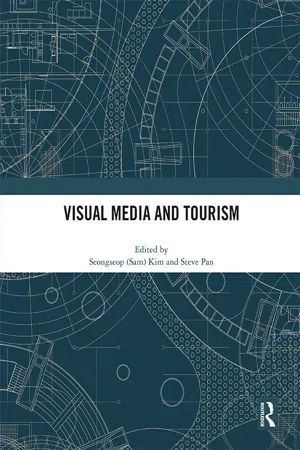The purpose of this study was to identify the effects of a food tourism video clip created by a destination marketing organization on potential tourists’ perceptions of the destination’s food values, familiarity with the destination’s food, behavioral involvement with the destination’s food, and intention to visit the destination for food tourism. A number of important findings were generated. First, of the five food values, “global food” and “attractive food” significantly influenced the respondents’ familiarity with Hong Kong food. Second, for the Generation Y group, Hong Kong food values such as “global food”, “attractive food”, and “realistic restaurants” had strong effects on the viewers’ behavioral involvement with Hong Kong food, while no such relationship was found between food value and behavioral involvement with Hong Kong food among the non-Generation Y group. Third, comparison of two generation groups showed that “realistic restaurants” had significantly more influence on behavioral involvement with Hong Kong food in the Generation Y group than in the non-Generation Y group. Overall, the results showed that the efficacy of the video clip in persuading potential tourists to visit the destination differed according to the generation.
Introduction
Food tourism has attracted significant research attention in the last decade (Björk & Kauppinen-Räisänen, 2016; Mkono, Markwell, & Wilson, 2013; Molz, 2007; Smith & Costello, 2009). Hall and Mitchell (2001, p. 308) gave a more rigorous definition of food tourism, such as “visitation to primary and secondary food producers, food festivals, restaurants, and specific locations for which food tasting and/or experiencing the attributes of specialist food production regions are the primary motivating factor for travel”. However, a more flexible definition of food tourism is tourist activities that are totally or partially related to tasting a place’s cuisine or to engaging in activities related to gastronomy (Herrera, 2012; Mak, Lumbers, & Eves, 2012).
For example, the Korea Tourism Organization promoted the country as a culinary destination in collaboration with famous celebrities, including star chefs and movie stars (Kim, Choe, & Lee, 2016). The literature indicates that many destination marketing organizations (DMOs) have transformed their major marketing tools to promote the foods of their destinations more effectively. Traditionally, DMOs have fostered food tourism through brochures, radio, and television (TV) advertisements (Frochot, 2003; Hjalager & Corigliano, 2000; Mellinger, 1994; Okumus, Okumus, & McKercher, 2007; Pritchard & Morgan, 1996). However, today, many DMOs attempt to build their brands as culinary destinations by creating video clips and posting them on social media and the Internet (Lim, Chung, & Weaver, 2012; Ontario Culinary Tourism Alliance + Skift, 2015). Although numerous DMOs have created and posted video clips on cyberspace platforms (Roque & Raposo, 2015), little is known about how food tourism video clips affect viewers’ familiarity and behavioral involvement with local food and whether the video clips are effective in producing the primary desired outcomes, such as higher levels of viewers’ behavioral intention to visit the destination. In particular, little research has explored the different effects of promotional video clips on different generations.
Comments, recommendations, and visual images of actual destinations on social media are considered to influence prospective tourists. Social media have become a major tool for companies in promoting certain products and communicating with customers as a marketing strategy. Lim et al. (2012, p. 199) have argued that “social media has shifted the paradigm of brand creation”. In the past, information on products and advertisements used to be controlled by companies. However, today, a brand can be generated and changed by consumers who share and disseminate information about products via social media. In this regard, many DMOs have realized the value of posting video clips on social media. However, few studies have examined the efficacy of video clips in promoting destinations. As a result, the literature has failed to keep abreast of the industry trends.
The aim of this study is to examine how promotional video clips posted on social media platforms by DMOs affect viewers, particularly with respect to food tourism products. Specifically, this study has seven objectives: (1) to identify the Hong Kong food values perceived by potential tourists; (2) to assess whether the food values featured in video clips influence the viewers’ familiarity with Hong Kong food; (3) to investigate whether a tourism destination’s food values featured in a video clip affect behavioral involvement with the destination’s food; (4) to investigate whether a tourism destination’s food values featured in a video clip influence the intention to visit the destination for food tourism; (5) to explore whether familiarity with a destination’s food affects the behavioral involvement with the destination’s food; (6) to analyze whether familiarity and behavioral involvement with a destination’s food affect the intention to visit the destination for food tourism; and (7) to examine whether two structural models differ with respect to samples of Generation Y and non-Generation Y subjects.
Food tourism in Hong Kong
In this study, Hong Kong was selected as the research site to investigate the effectiveness of food tourism video clips. There are several reasons for selecting Hong Kong as a culinary tourism destination. First, Hong Kong is a famous gas...
